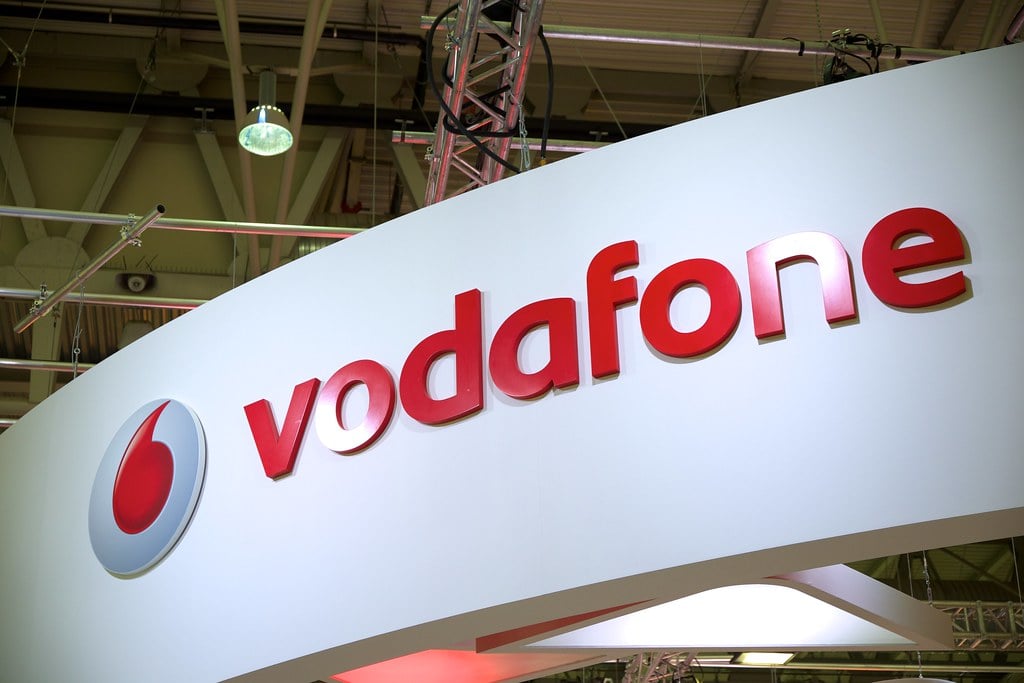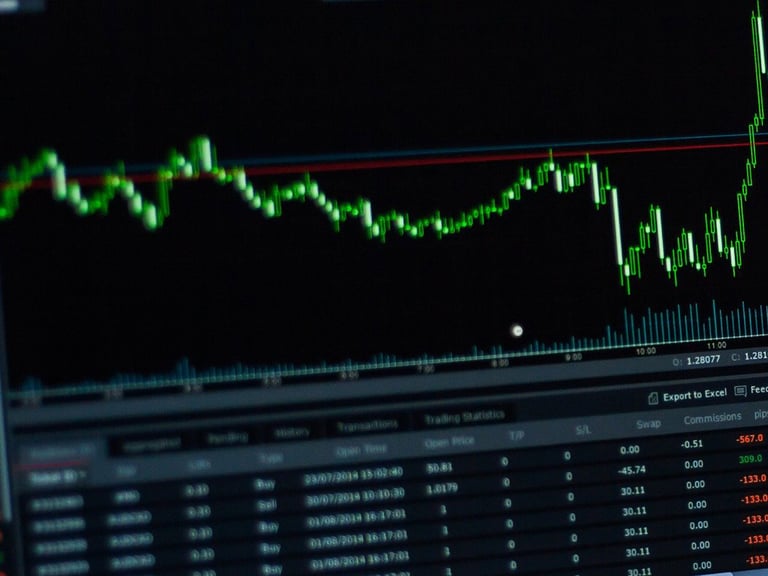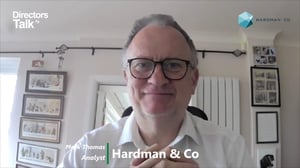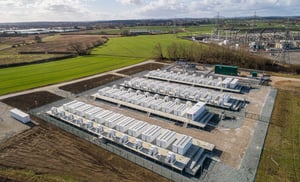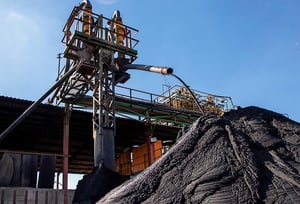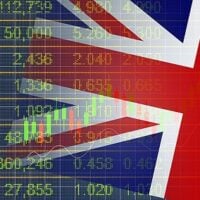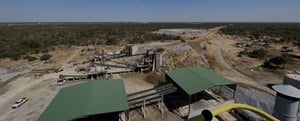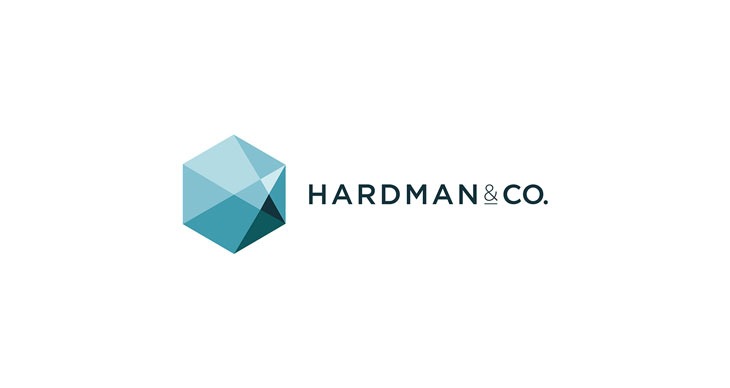Vodafone Group Plc (LON:VOD) has announced its H1 FY23 results.
Resilient performance in Europe & Africa, good progress on operational & portfolio priorities
· Group service revenue growth of 2.5%* in the first half of FY23
· Adjusted EBITDAaL declined by 2.6%* driven by a material prior year legal settlement, and commercial underperformance in Germany
· Pre-tax return on capital employed increased by 0.6 percentage points year-on-year to 6.9%
· Significant progress with portfolio strategy to create industrial scale, enable accelerated growth and unlock value
| Financial results | Page | H1 FY23 €m | H1 FY22 €m | Change % |
| Group revenue | 6 | 22,930 | 22,489 | 2.0 |
| Group service revenue | 6 | 19,207 | 19,010 | 2.5* |
| Operating profit | 6 | 2,935 | 2,620 | 12.0 |
| Adjusted EBITDAaL1 | 6 | 7,244 | 7,565 | (2.6)* |
| Profit for the financial period | 6 | 1,243 | 1,277 | |
| Basic earnings per share | 17 | 3.52c | 3.40c | |
| Adjusted basic earnings per share1 | 17 | 6.02c | 4.90c | |
| Interim dividend per share | 35 | 4.50c | 4.50c | |
| Cash inflow from operating activities | 17 | 6,280 | 6,455 | (2.7) |
| Adjusted free cash flow1 | 18 | (513) | 23 | |
| Net debt1 | 19 | (45,523) | (44,298) | (2.8) |
· Group revenue growth of 2.0% to €22.9 billion, driven by service revenue growth and higher equipment sales
· Operating profit increased by 12.0% to €2.9 billion, reflecting a higher share of income from associates and joint ventures and lower depreciation and amortisation
· FY23 Adjusted EBITDAaL is expected to be €15.0 – 15.2 billion at the lower end of original guidance
· Interim dividend per share of 4.5 eurocents, record date 25 November 2022
Nick Read, Vodafone Group Chief Executive, commented:
“In the context of a challenging macroeconomic environment, we are delivering a resilient performance this year, alongside making good progress with our operational and portfolio priorities.
We are pleased the Vantage Towers transaction accomplished our three key objectives – monetisation, deconsolidation and retaining co-control of these strategically important assets – and we continue to deliver portfolio actions to strengthen our businesses and accelerate growth. In addition, our recently announced fibre-to-the-home JV in Germany will further enhance our leading gigabit fixed network position in Europe’s largest market.
We are taking a number of steps to mitigate the economic backdrop of high energy costs and rising inflation. These include taking pricing action across Europe, whilst at the same time supporting our most vulnerable customers and driving energy efficiency measures across the business. We are also announcing today a new cost savings target of €1+ billion focused on streamlining and further simplifying the Group.
We are confident that the ongoing delivery of our organic strategy and portfolio actions will underpin long-term growth and create value for shareholders.”
Summary ⫶ Resilient financial performance
Organic growth
All amounts marked with an ‘*’ in this document represent organic growth which presents performance on a comparable basis, excluding the impact of foreign exchange rates, mergers and acquisitions, the hyperinflation adjustments in Turkey and other adjustments to improve the comparability of results between periods. Organic growth figures are non-GAAP measures. See non-GAAP measures on page 41 for more information.
Financial performance
Total revenue increased by 2.0% to €22.9 billion (FY22 H1: €22.5 billion), as service revenue growth and higher equipment sales was partly offset by unfavourable foreign exchange movements.
Adjusted EBITDAaL declined by 2.6%* to €7.2 billion1 (FY22 H1: €7.6 billion), with revenue growth offset by a prior year one-off legal settlement in Italy (1.4 percentage point drag year-on-year) and commercial underperformance in Germany. The Adjusted EBITDAaL margin was 2.0* percentage points lower year-on-year at 31.6%.
Operating profit increased by 12.0% to €2.9 billion, reflecting a higher share of income from associates and joint ventures and lower depreciation and amortisation. The Group made a profit for the period of €1.2 billion (FY22 H1: €1.3 billion) as an increase in operating profit and investment income was offset by a higher income tax charge, attributable to one-off deferred tax credits recognised in the prior period.
Basic earnings per share was 3.52 eurocents, compared to basic earnings per share of 3.40 eurocents in the prior year.
Cash flow, funding & capital allocation
Cash inflow from operating activities decreased by 2.7% to €6.3 billion (FY22 H1: €6.5 billion), with higher operating profit being more than offset by working capital movements and higher tax payments.
Free cash flow was an outflow of €3.2 billion (FY22 H1: outflow of €1.0 billion) reflecting lower Adjusted EBITDAaL and higher licence and spectrum payments in the period. Adjusted free cash flow was an outflow of €0.5 billion (FY22 H1: inflow of €23 million).
Net debt increased by €3.9 billion to €45.5 billion (€41.6 billion as at 31 March 2022). This was driven by the free cash outflow of €3.2 billion, equity dividends of €1.3 billion, and share buybacks of €1.0 billion used to offset dilution linked to mandatory convertible bonds. These factors were partly offset by other movements of €1.7 billion, relating to the settlement of 5G spectrum in Italy previously included in net debt. Settlement of the liability during the period had no impact on net debt, but the resulting cash payment was included in free cash flow. As at 30 September 2022, the weighted average of cost of debt was around 2.5% and average bond maturity was 11 years, with all bonds held at fixed interest rates.
Current liquidity, which includes cash and equivalents and short-term investments, is €11.5 billion (€12.3 billion as at 31 March 2022). This includes €7.6 billion of net collateral which has been posted to Vodafone from counterparties as a result of positive mark-to-market movements on derivative instruments (€2.2 billion as at 31 March 2022).
The interim dividend per share is 4.5 eurocents (FY22 H1: 4.5 eurocents). The ex-dividend date for the interim dividend is 24 November 2022 for ordinary shareholders, the record date is 25 November 2022 and the dividend is payable on 3 February 2023.
Hyperinflationary accounting in Turkey
As anticipated and explained in the Group’s reporting for the year ended 31 March 2022, Turkey now meets the requirements to be designated as a hyperinflationary economy under IAS 29 ‘Financial Reporting in Hyperinflationary Economies’. The Group has therefore applied hyperinflationary accounting, as specified in IAS 29, for amounts reported by Vodafone Turkey for the period commencing 1 April 2022. See note 1 of the unaudited condensed consolidated financial statements for further information. Our guidance for FY23 excludes any impact from this change in accounting.
Note:
1. Includes a reduction of €26 million resulting from hyperinflationary accounting in Turkey.
Strategy ⫶ Committed to improving returns through growth & portfolio action
Our strategy focuses on driving shareholder returns through growth, and is delivered through our customer commitments and enabling strategies. These work together towards our vision to become a new generation connectivity and digital services provider for Europe and Africa, enabling an inclusive and sustainable digital society.
We continued to make progress with our strategy during the first half of FY23 and highlights include: further deepening our customer relationships with lower customer churn; good results from our increased capital investment with improvements in network quality; increasing penetration of financial services in Africa; and another successful year of digital enabled efficiencies. The table below includes a selection of KPIs that illustrates progress in our key areas of focus.
| Units | H1 FY23 | H1 FY22 | ||
| Customer commitments | ||||
| Best connectivity products & services | ||||
| Europe mobile contract customers1 | million | 66.7 | 66.0 | |
| Europe broadband customers1 | million | 25.5 | 25.6 | |
| Europe Consumer converged customers1 | million | 9.3 | 8.3 | |
| Europe mobile contract customer churn | % | 13.4 | 13.1 | |
| Africa mobile customers2 | million | 188.0 | 186.0 | |
| Africa data users2 | million | 90.2 | 88.6 | |
| Business service revenue growth* | % | 2.6 | 1.2 | |
| Leading innovation in digital services | ||||
| Europe TV subscribers1 | million | 21.7 | 22.2 | |
| IoT SIM connections3 | million | 152 | 136 | |
| Africa M-Pesa customers2 | million | 55.6 | 49.0 | |
| Africa M-Pesa transaction volume2 | billion | 11.9 | 9.3 | |
| Outstanding digital experiences | ||||
| Digital channel sales mix4 | % | 26 | 24 | |
| End-to-end TOBi completion rate5 6 | % | 51 | 41 | |
| Enabling strategies | ||||
| Leading gigabit networks | ||||
| 5G available in European cities1 | # | 344 | 244 | |
| Europe on-net gigabit capable connections1 | million | 50.1 | 46.5 | |
| Europe on-net NGN broadband penetration1 | % | 29 | 30 | |
| Simplified & most efficient operator | ||||
| Pre-tax ROCE (controlled)7 | % | 6.9 | 6.3 | |
| Post-tax ROCE (controlled and associates/joint ventures)7 | % | 5.1 | 4.3 | |
| Europe markets where 3G switched off1 | # | 4 | 4 |
1. Including VodafoneZiggo | 2. Africa including Safaricom | 3. H1 FY23 includes an adjustment to our customer base to remove inactive SIMs | 4. Based on Germany, Italy, UK, Spain only | 5. Group excluding Egypt | 6. Defined as percentage of total customer contacts resolved without human interaction through TOBi | 7. These line items are non-GAAP measures. See page 41 for more information. The half-year ROCE calculation is based on returns for the 12 months ended 30 September.
A more detailed review of our strategic progress is contained within an accompanying video presentation available here: investors.vodafone.com/reports-information/results-reports-presentations. In this presentation we outline: we are systematically executing our organic growth strategy and making significant progress with our proactive portfolio management plans; we have significant action plans under way to mitigate the challenging macroeconomic backdrop; and we are committed to improving shareholder returns through our long-term organic strategy.
Our action plan to mitigate the current macroeconomic challenges includes price initiatives and an extension of our ongoing efficiency programme. Price initiatives have been implemented in 12 out of 13 European markets and include contractual price increases, reduced promotional discounts and new ARPU accretive product portfolios. We now have 7 European markets with inflation-linked pricing structures. The extension of our efficiency programme will generate over €1 billion of additional cost savings by FY26 through streamlining and simplifying our group-wide structure and further accelerating the digitalisation of our operations.
Our purpose ⫶ We connect for a better future
We believe that Vodafone has a significant role to play in contributing to the societies in which we operate and we want to enable an inclusive and sustainable digital society. We continue to make progress against our purpose strategy and provided a full update in our FY22 Annual Report and supplementary materials (available on investors.vodafone.com). Highlights and achievements from the first half of FY23 are summarised below.
Energy efficiency initiatives
The expansion of our networks and the significant increase in data traffic volumes means we now carry 7 times more mobile data compared to just five years ago, yet our total energy consumption has remained roughly consistent over the same period. We are committed to continually improving our energy efficiency, particularly the efficiency of our base station sites and our technology centres, which accounted for 96% of our total energy consumption in FY22.
Our strategy to optimise energy usage and improve energy efficiency includes modernising our networks. Between FY17 and FY22, the share of 4G and 5G traffic doubled on our network – and now accounts for over 90% of our mobile data traffic – as we shut down 3G networks in favour of more efficient 4G and 5G networks. In addition, we already put mobile radio capacity layers throughout Europe into low power modes during low traffic periods. We are now extending this functionality so that it operates 24 hours a day, 7 days a week, and we will continue to enhance this capability to maximise energy efficiency.
With respect to our passive infrastructure, we have been investing in power and cooling upgrades, IoT and smart metering. For example, we use AI-based algorithms to optimise cooling in 70 technology centres across Europe and Africa and we will increase our investment in passive infrastructure upgrades going forward. All these programmes are underpinned by our extensive energy data management and analytics system, which collects and stores data feeds from our electricity suppliers and from smart meters. This system is now live across 13 markets in Europe, with smart meters installed at 53,000 sites.
Sourcing renewable electricity
Following our energy purchasing hierarchy approach, we prioritise energy efficient practices, before moving on to on-site generation of renewable energy, renewable power purchase agreements (‘PPAs’) and Renewable Electricity Certificates (‘RECs’). Whilst on-site generation of renewable electricity accounted for less than 1% of our overall renewable energy consumption in FY22 due to technical and space constraints, we continue to drive innovation in this area. For example, our recent Renewable Power Challenge encouraged organisations to submit innovative solutions to the challenge of generating renewable power directly at our mobile base stations. We have shortlisted partners who develop microgrids in Africa and manufacturer micro wind turbines and will be supporting them as they develop proof of concepts to help us assess the feasibility and scalability of their solutions.
In Europe, we are expanding our PPA strategy and have now signed PPAs in Germany, Italy, UK, Spain and Greece, which address 15% of our FY23 electricity supply in Europe. These PPAs trade at a discount to current wholesale electricity prices and provide us with more economic certainty against potentially volatile wholesale electricity prices, as well as helping to create new renewable capacity. In Africa, Vodacom is pursuing numerous climate-related initiatives, including renewable energy powered rural sites and a pilot renewable energy solution in South Africa with the state-owned utility, Eskom.
Supporting customers in financial hardship
We are conscious of the cost-of-living pressures our customers are facing during this challenging macroeconomic period. We have implemented a cost-of-living plan, consisting of three elements: social or low-cost tariffs in all markets; extra measures to ensure our consumers and small businesses are supported, including our free V-Hub service for SMEs; and leveraging our technology & digital services to help customers reduce their energy usage.
The Spirit of Vodafone
Our employee survey measures progress on how our people experience our culture, engagement, and connection to our purpose. The results from the latest survey conducted in September show that our employee engagement index remained high at 76 (May 2022: 72) and 88% of employees feel that their daily work contributes to our purpose.
Outlook
Outlook for FY23
In May 2022, we set out guidance for FY23 for our expectations of Adjusted EBITDAaL and Adjusted free cash flow. Since this guidance was set in May 2022, the global macroeconomic climate has worsened, with energy costs and broader inflation in particular, impacting our financial performance. A comprehensive action plan is underway to mitigate the effects of the challenging macroeconomic environment. Our updated guidance for FY23 financial performance is set out in the table below.
FY23 Guidance
| Original guidance | Updated guidance | |
| Adjusted EBITDAaL1 | €15.0 – €15.5 billion | €15.0-15.2 billion |
| Adjusted free cash flow1,2 | c. €5.3 billion | c.€5.1 billion |
In addition to the updated guidance for FY23, we have set out considerations of factors likely to affect our financial performance in FY24 within an accompanying video presentation available here: investors.vodafone.com/reports-information/results-reports-presentations.
Assumptions
The guidance above reflects the following:
· Foreign exchange rates used when setting guidance were as follows:
– EUR 1 : GBP 0.84;
– EUR 1 : ZAR 17.32;
– EUR 1 : TRY 16.75; and
– EUR 1 : EGP 19.28.
· As anticipated and explained in the Group’s reporting for the year ended 31 March 2022, Turkey now meets the requirements to be designated as a hyperinflationary economy under IAS 29 ‘Financial Reporting in Hyperinflationary Economies’. The Group has therefore applied hyperinflationary accounting, as specified in IAS 29, for amounts reported by Vodafone Turkey for the period commencing 1 April 2022. See note 1 of the unaudited condensed consolidated financial statements for further information. Our guidance as presented above excludes any impact from this change in accounting.
· Our guidance assumes no material change to the structure of the Group.
1. Adjusted EBITDAaL and Adjusted free cash flow are non-GAAP measures. See page 41 for more information.
2. Adjusted free cash flow is Free cash flow before licences and spectrum, restructuring costs arising from discrete restructuring plans, integration capital additions and working capital related items, M&A, and Vantage Towers growth capital expenditure. Growth capital expenditure is total capital expenditure excluding maintenance-type expenditure.

